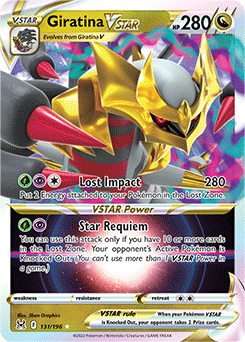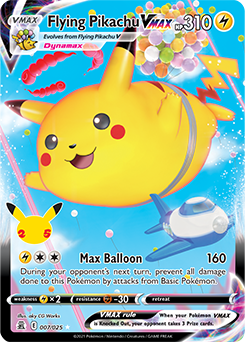The Brightest Flame Burns Quickest – Lost Origin’s Brief Format
Hello everyone! This is Grant writing from between Peoria and Salt Lake City Regional Championships. The current Standard format meta finds itself in an interesting spot. For North America, there are only two events taking place in the Lost Origin format, and only two weeks apart from one another. After Salt Lake, there are no North American events for nearly two months until Toronto, and even the Latin America International Championships will be played in the Silver Tempest format. My point to all of this is that Lost Origin is short-lived.
The Current Standard Format Meta

Due to the numerous online events taking place, even before Peoria, the meta has evolved significantly in a short span of time. Lost Zone toolbox and Giratina VSTAR emerged as the new frontrunners. Not only is the Lost Zone engine shiny and new, but also incredibly strong, and had strong results in Japan. Shortly after this, still before Peoria, decks started to include two copies of Empoleon V to counter Comfey. As a result, the Comfey decks teched heavy counts of cards such as Canceling Cologne and Path to the Peak Stadium in addition to the four copies of Escape Rope that they already played. This is about where we landed when Peoria Regionals took place, with Tord Reklev winning the tournamet with said Lost Box packing four copies of Path to the Peak.
There were a few “anti-meta” decks that were played to decent results at Peoria. I use the term “anti-meta” loosely, as these are known decks but they were played with the goal of targeting a specific meta rather than being inherent powerhouses. This is noteworthy because the format was brand new, yet the meta still defined enough to play such a reactionary style of deck. At least, that’s what I thought. In reality, the Top 16 featured a menagerie of nine different archetypes.
The first of these anti-meta decks was Regigigas, played by my group as well as some others. Two Regi players made Top 16, while two others including myself bubbled out. Regigigas boasts strong matchups against Lost Zone decks, Mew VMAX, and Kyurem VMAX, while taking a 50-50 to Origin Forme Palkia VSTAR and a losing matchup to Hisuian Goodra VSTAR. Regi’s incredible matchups come at the cost of some consistency, but compared to the rest of the meta decks, it doesn’t feel all that inconsistent. Gift Energy makes the deck insanely strong compared where the deck was at pre-Lost Origin, and a third Regigigas was added to counter the addition of Lost City in Mew VMAX decks.
Regi performed fairly well for our group at Peoria. Kidd bubbled out of Top 8, I bubbled out of Top 16, and Azul also made Top 32. Our losses were mainly due to bricking, as the deck is able to crush most matchups when it’s firing on all cylinders. Caleb lost his win-and-in to Hisuian Goodra VSTAR, which was an unfortunate pairing because it us a bad matchup. I found that Regi, being a single-Prize deck, sometimes has slower games. This led to me taking three unintentional ties, which was a huge bummer. Two of those matches I was guaranteed to win and the other was a 50-50. It is not always apparent when to scoop, especially with a deck like this Regi. This is a potential downside of the deck that we did not anticipate. It’s easy to accept losing only one game in a best-of-three, but sometimes that means you’re tying instead of winning the match.
The other anti-meta deck was Hisuian Goodra VSTAR, which had two Top 16 placements but none in Top 8. Hisuain Goodra VSTAR is especially strong against single-Prize decks, though it has questionable matchups elsewhere, being notably weak against Mew VMAX. However, Mew VMAX had a weak showing in the tournament with only one placed in the Top 16.
What Decks Performed Best?
With all this talk about the decks that made Top 16, that begs the question, what decks performed the best? Although Lost Box won the event, it was the only one of its kind in Top 16. Origin Forme Palkia VSTAR variants actually made up five of the Top 8 in a clear display of dominance. However, two were Kyurem VMAX builds, with our very own Zakary Krekeler playing just a 1-1 line of Origin Forme Palkia VSTAR. Although we all knew Origin Forme Palkia VSTAR / Inteleon was still good after its dominance in the Astral Radiance format, it just wasn’t talked about in light of all the new decks from Lost Origin. Although it didn’t take first place, I’d say that getting second along with two other Top 8 spots made it the best-performing deck of the tournament.
Origin Forme Palkia VSTAR is the outlier here for a few reasons. For one, it is a well-rounded deck that has a manageable matchup against everything. Of all the nine different decks in Top 16, there is not one that I can say Origin Forme Palkia VSTAR is unfavored against. The downside to the deck is its inconsistency. Origin Forme Palkia VSTAR is likely the least-consistent deck in the format, making it much better suited for best-of-three than best-of-one. Of the twelve games against Origin Forme Palkia VSTAR I played at Peoria, my opponent bricked in at least half of them.
Pre-Peoria, I classified every deck as one of three categories: single-Prize, defensive, or nuke. Single-Prize decks beat nuke decks, nuke decks beat defensive decks, and defensive decks beat single-prize decks. It doesn’t take Sherlock Holmes to figure out which deck belongs to which category, except when it comes to Origin Forme Palkia VSTAR. I initially classified the deck as a nuke deck. It has fairly high damage output and historically struggles with tanky decks such as Duraludon VMAX and Stonjourner VMAX. However, Origin Forme Palkia VSTAR is a lot more dynamic than nuke decks. It has more lines, more options, and more versatility. I don’t believe it fits neatly into one of the three boxes that I had assigned to the format.
It’s impressive that Hisuian Zoroark VSTAR was able to get Top 8 and Top 16, but I still think that deck is complete trash. If you want to hear more detail as to why, tune in to twitch.tv/tricroar and you can get my anti-Zoroark propaganda rant live and uncensored. Interestingly, Giratina VSTAR took just one Top 8 spot with no others in Top 16, aside from the lone Arceus VSTAR / Giratina VSTAR, which is considered a different archetype. Since Giratina VSTAR was the second-most popular deck, I would say it underperformed for how strong it supposedly is.
Salt Lake City Power Rankings
- Origin Forme Palkia VSTAR
- Lost Zone Box
- Flying Pikachu VMAX
- Regigigas
- Mew VMAX
- Giratina VSTAR
- Kyurem VMAX
- Hisuian Goodra VSTAR
- Hisuian Zoroark VSTAR
Analysis of the Meta
Two of the most versatile decks in the current meta are Origin Forme Palkia VSTAR and Lost Zone box because they can handle a wide variety of matchups. They have a lot of support, strong engines, and are well-rounded decks. It’s no surprise that they got first and second at Peoria, and that is why they are the two best decks in the format. However, that Flying Pikachu VMAX coming in at number three on my list might seem quite random.

The Power Ranking list is based on my opinion, though I believe it to be fairly objective. The list simply denotes how strong each deck is in the current meta. Flying Pikachu VMAX had a few Day 2 spots at Peoria, though it didn’t have any particularly strong finishes. That said, Flying Pikachu VMAX is the most high-risk, high-reward play for Salt Lake City. The risk is that it is weak to Kyurem VMAX and Mew VMAX (though the latter could easily be fixed by including two Drapion V). However, if you look at the rest of the list, Flying Pikachu VMAX’s matchups look quite good. Flying Pikachu VMAX decks at Peoria played Espeon VMAX as a counter to both Sableye and Giratina VSTAR. Although Sableye can get a few attacks, they still have to deal with the entire deck as well as counter Stadiums. Giratina VSTAR doesn’t play Path to the Peak, so it has no way to OHKO Flying Pikachu VMAX or an Arceus VSTAR with support from Radiant Gardevoir. Of course, this would change if the Giratina VSTAR list plays Galarian Zigzagoon or Choice Belt. Flying Pikachu VMAX naturally beats both Origin Forme Palkia VSTAR and Regigigas. Overall, Flying Pikachu VMAX is quite the meta call, and it has the potential to finish well too.
This concludes the public portion of this article.
If you'd like to continue reading, consider purchasing a PokeBeach premium membership! If you're not completely satisfied with your membership, you can request a full refund within 30 days.
Each week we post high-quality content from some of the game's top players. Our article program isn't a corporate operation, advertising front, or for-profit business. We set our prices so that we can pay the game's top players to write the best content for our subscribers. Each article topic is carefully selected, goes through multiple drafts, and is touched up by our editors. We take great pride in our program!

